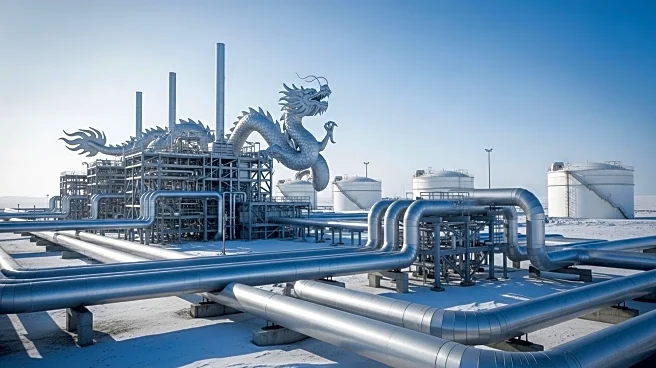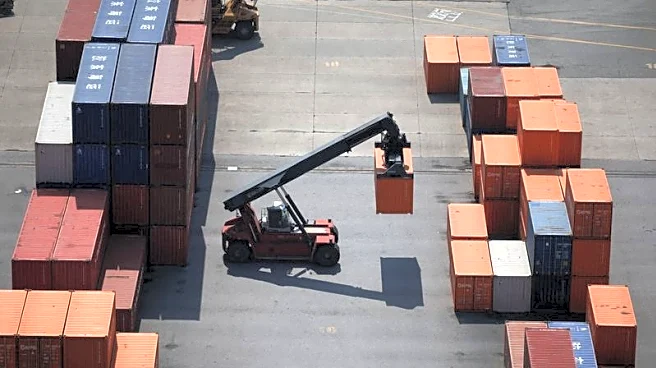What's Happening?
China has launched a new shipping route through the Arctic Ocean, known as the Northern Sea Route, as part of its 'Polar Silk Road' initiative. This route, made possible by climate change, offers a shorter journey from China to Europe compared to traditional routes like the Suez Canal. The Istanbul Bridge, a container ship, is currently navigating this route, marking the official opening of the world's first China-Europe Arctic Express container route. The route promises economic and geopolitical benefits for China, but experts warn of ecological and human risks associated with increased shipping in the fragile Arctic environment.
Why It's Important?
The development of the Northern Sea Route represents a significant shift in global trade dynamics, potentially reorienting trade routes and reducing travel time between Asia and Europe. For China, this route offers strategic advantages, including bypassing traditional chokepoints and enhancing its presence in the Arctic. However, the environmental risks are substantial, with concerns about oil spills, increased noise pollution, and the impact on marine life. The route's success could further cement China's role as a key Arctic stakeholder, challenging the U.S. and European influence in the region.
What's Next?
The future of the Northern Sea Route depends on various factors, including economic viability, geopolitical tensions, and environmental safety. If traditional routes face disruptions, the Arctic route may become more attractive. However, a major environmental disaster could make the route politically untenable. China will likely continue to develop its polar expertise, while Western shipping companies remain cautious due to environmental concerns and Russian control over the route. The Mediterranean Shipping Company's decision not to use the route highlights the ongoing debate over its safety and environmental impact.
Beyond the Headlines
The Northern Sea Route's development raises ethical questions about exploiting fragile ecosystems for economic gain. The potential for increased geopolitical tensions in the Arctic, as countries vie for control and influence, could lead to international disputes. The environmental impact of increased shipping in the Arctic, including the use of heavy fuel oils, poses long-term risks to the region's biodiversity and climate. These developments may prompt calls for stricter regulations and international cooperation to protect the Arctic environment.











